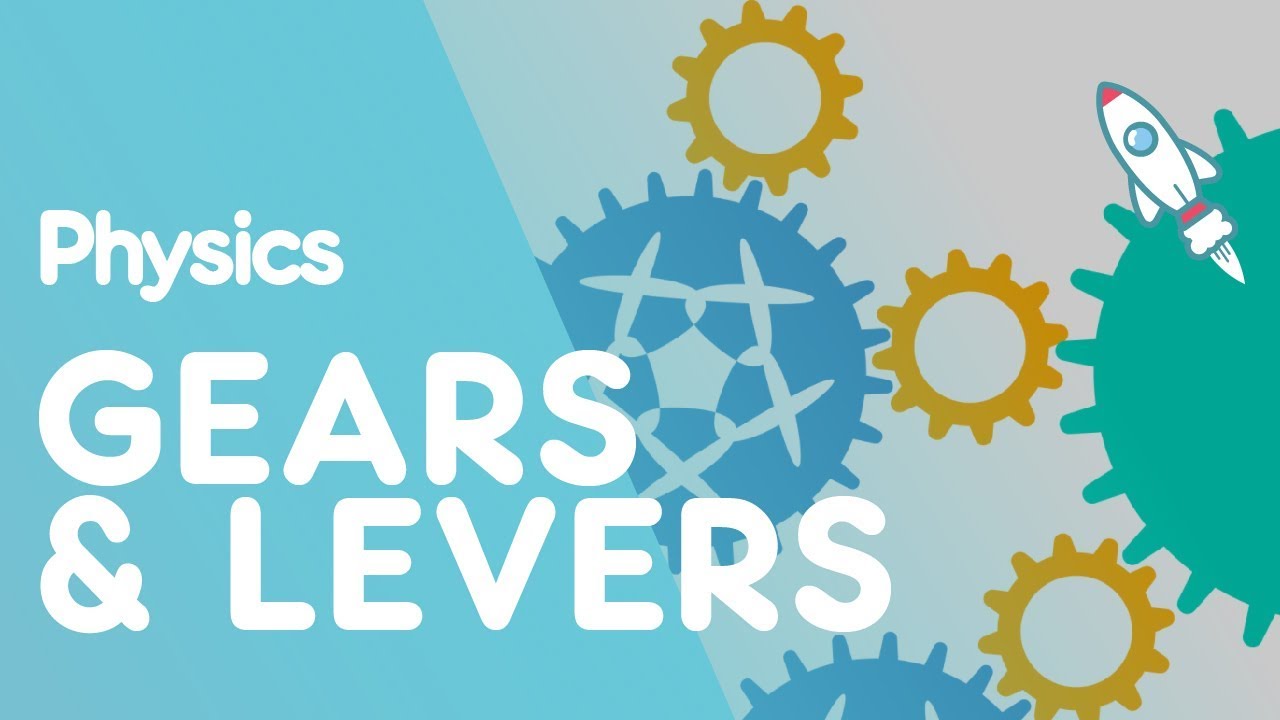Gears and levers | Forces | Physics | FuseSchool
In this video we’re going to learn about levers and gears.
A force can turn an object around a hinge or a pivot.
For example, opening a door uses a turning force. The door turns around the hinges. This turning force is known as the moment of the force.
For more information on moments watch this video.
The moment of a force depends on;
(1) The size of the force
(2) the distance between the force and the pivot.
The greater the distance between the force and the pivot, the greater the moment of the force. This explains why a door handle is as far away as possible from the hinges, in order to increase the moment of the force.
Levers are simple machines or mechanisms that make work easier to do. They use moments. To reduce the force needed to perform a task.
Levers are sometimes called force multipliers.
Levers increase the size of the moment of a force.
Gears are wheels with teeth on the edges that fit together. They transmit power from one part of a machine to another part. So in a bike, they take the power from the pedals to the back wheel.
Gears rotate on an axle at their centre.
As one gear rotates the other gear rotates in turn. You can connect as many gears as you want, and only need to power the one gear to turn all the gears.
If the first gear turns clockwise, then the second anti-clockwise, and the third clockwise again.
The original gear is called the driver, and the other gears are said to be driven.
Gears act as levers – they make work easier to do. They use moments.
A force transmitted to a larger gear causes a bigger moment, because the distance is larger.
This is helpful when cycling or driving uphill, compared with going downhill and quickly.
To cycle uphill, you select a low gear which is a larger gear wheel. Therefore your force exerted on this gear gives a bigger moment, helping to power you uphill.
Whereas to go quickly, you select a higher gear which is a smaller gear wheel. Your force gives a smaller moment but turns the wheel much more quickly.
Let’s look at an example… the force that is exerted on gear A will be the same as the force that also acts on gear B. But the moments will be different…
So start by working out the force that’s being exerted on gear A, and then use this force for B to calculate the moments acting on B.
Pause the video and give it a go.
We’ve learned that levers and gears make work easier. The amount of force is the same, but larger distances increase the size of the moments.
Credits
Design & Animation: Bing Rijper
Narration: Dale Bennett
Script: Bethan Parry
SUBSCRIBE to the FuseSchool YouTube channel for many more educational videos. Our teachers and animators come together to make fun & easy-to-understand videos in Chemistry, Biology, Physics, Maths & ICT.
VISIT us at www.fuseschool.org, where all of our videos are carefully organised into topics and specific orders, and to see what else we have on offer. Comment, like and share with other learners. You can both ask and answer questions, and teachers will get back to you.
These videos can be used in a flipped classroom model or as a revision aid.
Find all of our Chemistry videos here:
Find all of our Biology videos here:
Find all of our Maths videos here:
https://www.youtube.com/watch?v=hJq_cdz_L00&list=PLW0gavSzhMlTyWKCgW1616v3fIywogoZQ
Twitter: https://twitter.com/fuseSchool
Access a deeper Learning Experience in the FuseSchool platform and app: www.fuseschool.org
Follow us: http://www.youtube.com/fuseschool
Friend us: http://www.facebook.com/fuseschool
This Open Educational Resource is free of charge, under a Creative Commons License: Attribution-NonCommercial CC BY-NC ( View License Deed: http://creativecommons.org/licenses/by-nc/4.0/ ). You are allowed to download the video for nonprofit, educational use. If you would like to modify the video, please contact us: info@fuseschool.org
source

